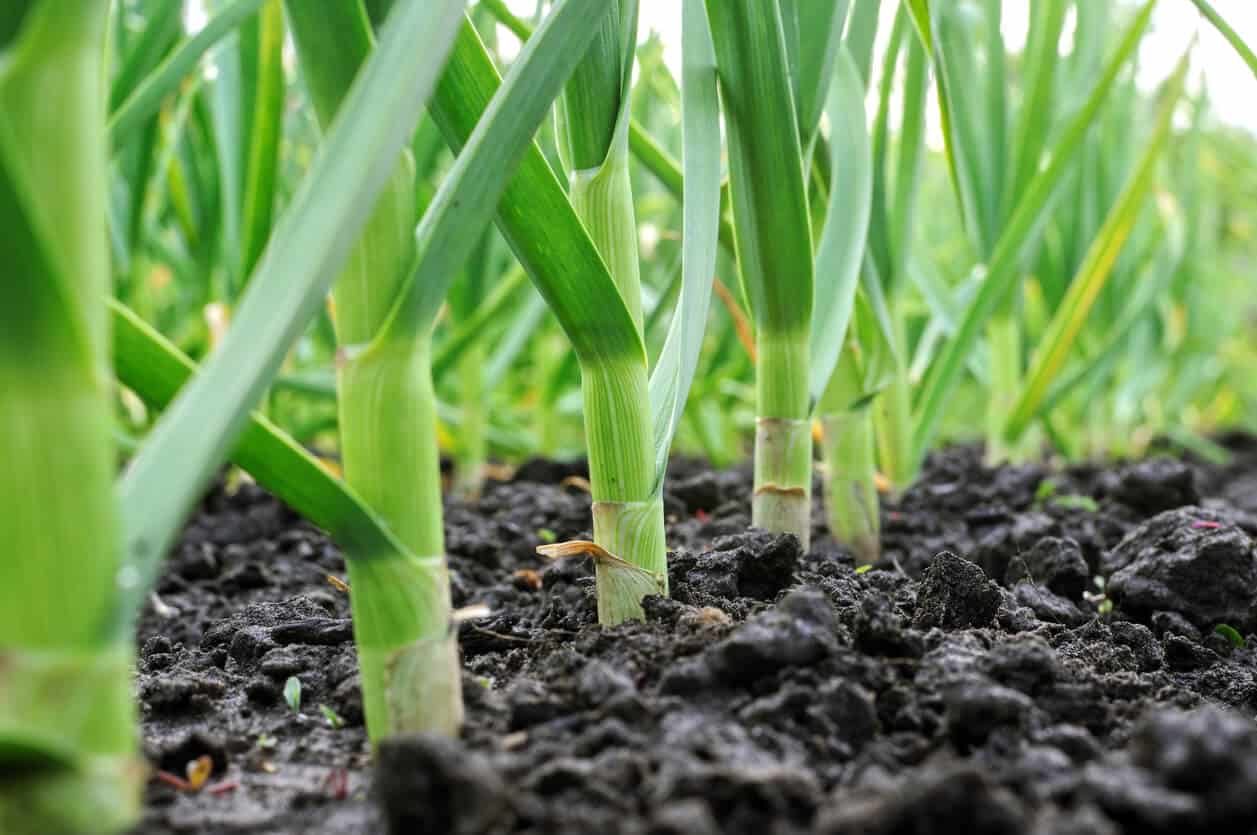Garlic is a versatile and easy-to-grow crop that adds big flavor to soups, sauces, roasts, and more. The key to a successful garlic harvest in Georgia is choosing the right varieties that are suited to the climate. Here are the top types and cultivars of garlic recommended for Georgia vegetable gardens.
Overview of Garlic Types
There are two main types of garlic
-
Hardneck garlic – Produces flower stalks and aerial bulblets Better suited for northern climates
-
Softneck garlic – Does not produce flower stalks Best adapted to southern climates like Georgia
Within these types there are different cultivars. The University of Georgia Cooperative Extension recommends focusing on softneck garlics for Georgia, as hardnecks generally require colder winters.
The three best sub-types of softneck garlic for Georgia are:
- Silverskin
- Artichoke
- Elephant garlic
Top Softneck Garlic Varieties for Georgia
Here are some excellent cultivars to consider in each softneck category:
Silverskin
- Mild French – Large bulbs, mild flavor, does well in hot and dry areas
- Silver White – Very high yield, long storage life
Artichoke
- Inchelium Red – Large bulbs, mild lingering flavor
- California Early – Mild, slightly sweet flavor
- Chet’s Italian – Mild flavor, tolerates heat well
Elephant Garlic
- Elephant garlic is actually a type of leek, not a true garlic. It has a very mild, slightly garlic-like flavor. The bulbs are enormous with just 3-4 giant cloves each.
When and How to Plant Garlic in Georgia
-
Timing – Plant garlic cloves in Georgia between late September and November. This allows time for roots and leaves to develop before bulbing begins in spring.
-
Spacing – Plant cloves 4-6 inches apart and 1-3 inches deep. Rows can be 12-14 inches apart.
-
Soil – Garlic needs loose, friable soil enriched with compost.Neutral pH around 6.5-7.
-
Sun – Plant in a sunny spot. Garlic wants at least 6 hours of direct sun per day.
-
Fertilizer – Add a balanced organic fertilizer at planting time. Side dress with nitrogen in spring when shoots are 4-6 inches tall.
-
Watering – Keep soil evenly moist through the growing season, but avoid soggy conditions. Stop watering once the leaves start browning and drying in early summer.
Growing Tips for Garlic in GA
Follow these tips for the best garlic harvest:
-
Select large, healthy planting cloves from mature bulbs. Larger cloves produce bigger bulbs.
-
Rotate planting sites each year; avoid areas where onions or garlic grew recently.
-
Loosen soil and mix in aged compost or manure before planting.
-
Plant cloves pointy end up, root end down, 1-3 inches deep.
-
Mulch beds after planting to retain moisture and suppress weeds.
-
Keep plants actively growing with consistent soil moisture through spring.
-
Monitor for pests like thrips and diseases like botrytis; treat promptly.
-
Harvest when 1/3 to 1/2 of the leaves have browned and dried, before bulbs split.
-
Cure bulbs in a warm, dry spot out of direct sun for 1-2 weeks after harvest.
-
Store cured bulbs in a cool, dry place. Save the biggest for next year’s planting.
With the right garlic varieties selected for your climate, proper spacing, and care throughout the growing season, you can enjoy an abundant garlic crop in your Georgia garden.
Watch This Before You Plant Garlic
FAQ
What is the best tasting garlic to grow?
What is the most heat tolerant garlic?
What temperature is too hot for garlic to grow?
Which clove of garlic produces the best garlic?
The larger outer cloves produce the best garlic. Garlic has flat leaves rather than the round hollow leaves of the onion. Garlic is used largely as a condiment and as flavoring in gravies, tomato sauces, soups, stews, pickles, salads, salad dressing and breads. Many cooks find it indispensable in the kitchen.
Can garlic grow in Georgia?
Hard-necked garlics may grow in Georgia but generally prefer the cold winters and long, cool springs of more northern climates. Soft-necked garlics are well-adapted to the more temperate climate of the South and, because they do not bolt easily, can flourish through the erratic temperatures of southern winters.
When to harvest garlic in Georgia?
Depending on the area of Georgia, garlic will be ready to harvest from late May to mid-July. When garlic is mature, leaf tops will begin to dry, discolor and bend towards the ground. Harvest the garlic when one-third to one-half of the leaves have died back in this manner.
How do you care for a garlic plant in Georgia?
Keep mulch 2–3 in. away from the plant stem. As with any other plant, mulch might create an environment for disease if it contacts the stem and is kept too damp. Depending on the area of Georgia, garlic will be ready to harvest from late May to mid-July. When garlic is mature, leaf tops will begin to dry, discolor and bend towards the ground.
- A Complete Guide to Caring for Yuki Cherry Blossom Shrub - January 23, 2025
- Identifying Red Hot Poker Seeds: What to Look For When Harvesting Torch Lily Pods - January 23, 2025
- A Complete Guide to Harvesting Evening Primrose Seeds - January 23, 2025

